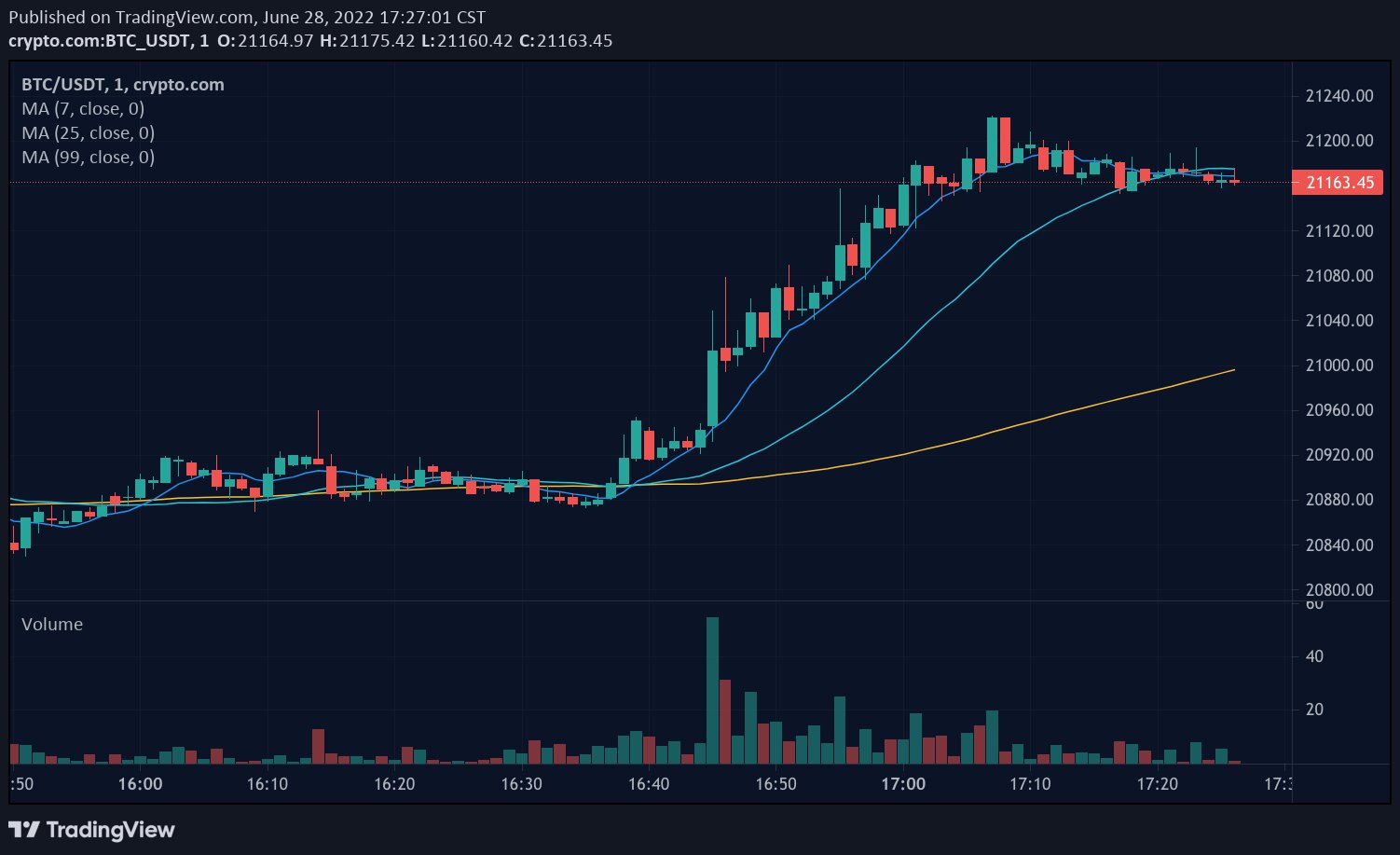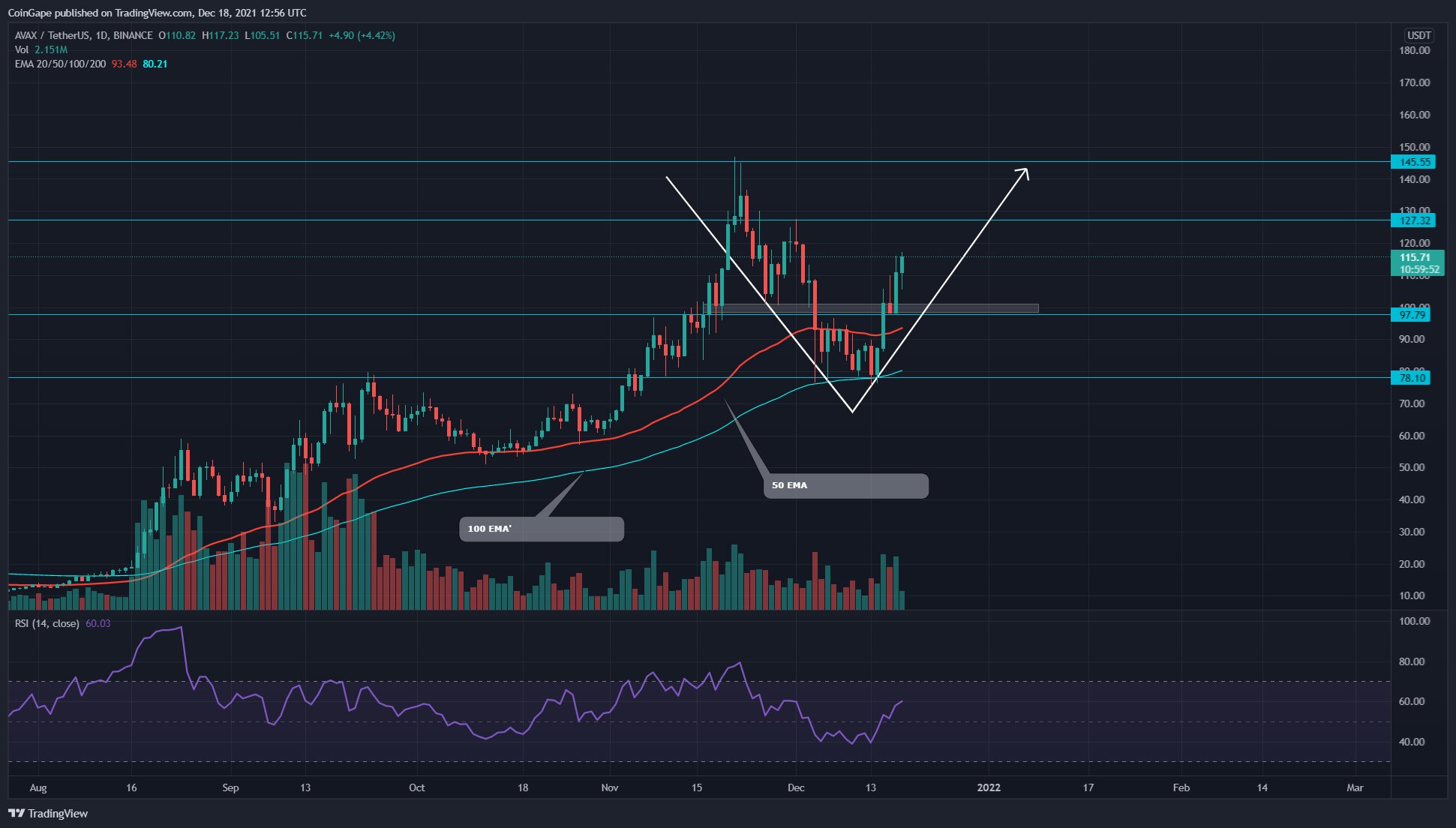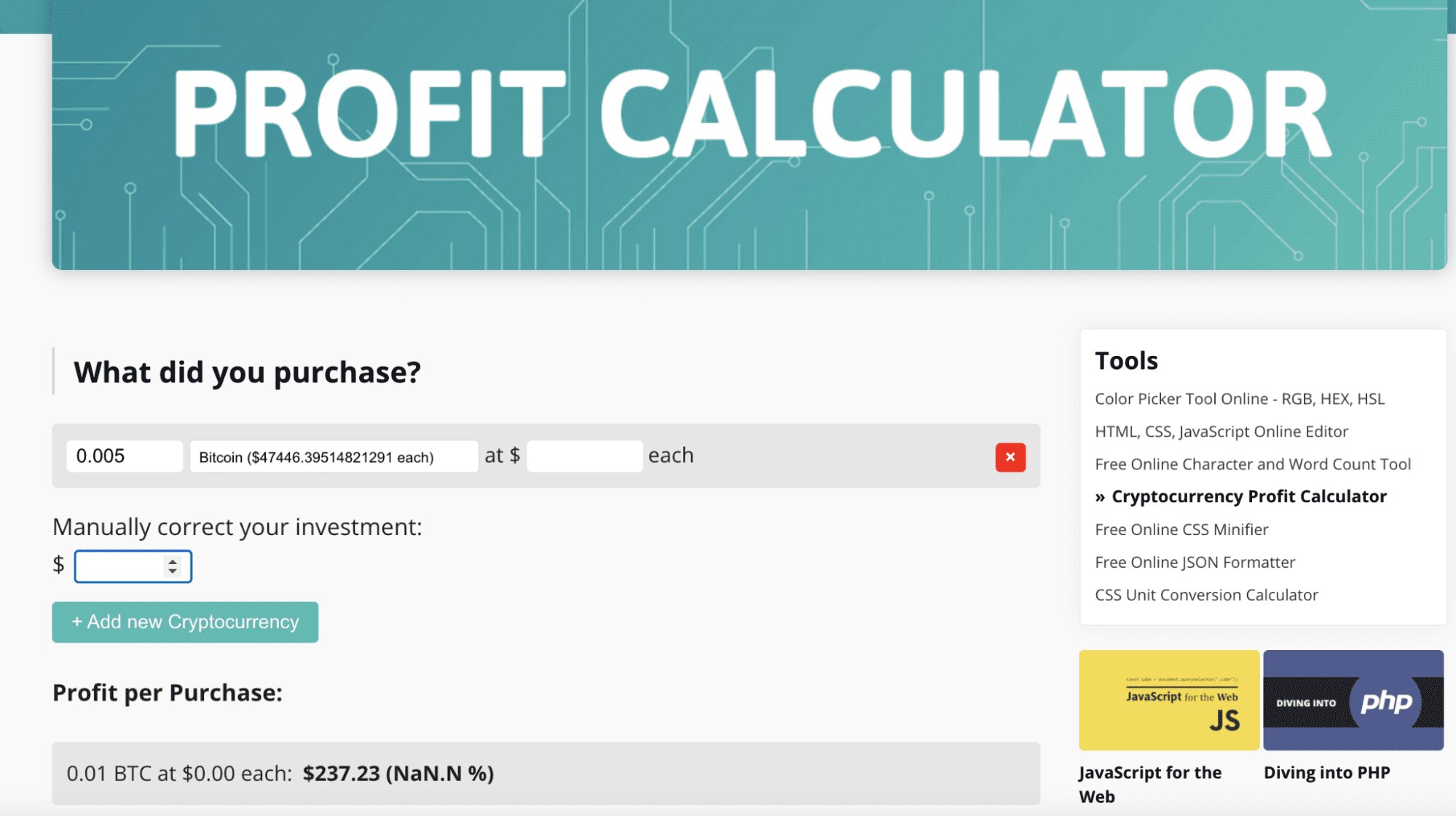Introduction
Welcome to the exciting world of cryptocurrencies, where digital assets are bought, sold, and traded around the clock. As a cryptocurrency enthusiast or trader, it’s important to understand the various factors that can influence the price of a cryptocurrency. One key factor that often plays a significant role is volume.
Volume refers to the total number of shares or contracts that are traded within a given time period. In the context of cryptocurrency, volume represents the number of tokens or coins that are bought or sold within a specific timeframe. It provides valuable insights into the liquidity and overall market activity of a particular cryptocurrency.
When it comes to understanding volume in crypto, it’s crucial to know how it is calculated. Volume is typically measured in terms of the number of cryptocurrency units that have been traded in a given timeframe, such as 24 hours. It can be calculated by multiplying the number of cryptocurrencies traded in a single transaction by the price of each cryptocurrency unit.
The importance of volume in crypto cannot be overstated. High volume indicates a more active and liquid market, where there is a higher likelihood of finding buyers and sellers for a particular cryptocurrency. On the other hand, low volume suggests a less active market, which can lead to increased price volatility and difficulty in executing trades.
Volume also plays a crucial role in determining the impact on the price of a cryptocurrency. When there is a large volume of buy orders, the price of a cryptocurrency tends to rise. Conversely, when there is a significant volume of sell orders, the price tends to decrease. This relationship between volume and price is an important aspect of technical analysis, which is widely used by traders to make informed decisions.
Understanding volume patterns is essential for cryptocurrency traders. Various techniques can be applied to analyze volume data, such as volume moving averages and volume divergence. These techniques can provide valuable insights into market trends, trading opportunities, and potential price reversals.
Some cryptocurrency exchanges are known for their high trading volume, making them attractive options for traders. These exchanges provide ample liquidity and a wide variety of trading pairs, allowing traders to execute their trades quickly and efficiently.
In this article, we will explore the concept of volume in crypto in detail, discussing its calculation, importance, impact on price, analysis techniques, and popular exchanges with high volume. We will also provide tips for trading based on volume to help you navigate the exciting world of cryptocurrency trading.
Definition of Volume
Volume is a fundamental concept in the world of finance and trading, and it holds significant importance in the realm of cryptocurrencies. In simple terms, volume refers to the total number of shares, contracts, or units of a particular asset that have been bought or sold during a given time period.
In the context of cryptocurrencies, volume represents the total number of tokens or coins that have been traded within a specific timeframe. It provides insights into the liquidity and market activity of a particular cryptocurrency.
Volume is typically measured and reported in terms of the number of cryptocurrency units that have been exchanged. For example, a trading volume of 10,000 Bitcoin means that 10,000 units of Bitcoin have been bought or sold in a given timeframe, such as 24 hours.
It’s important to note that volume is not limited to just the number of transactions that have occurred. Instead, it takes into account the total number of units exchanged within those transactions. For instance, if a single transaction involved the buying or selling of 100 Bitcoin, the trading volume would be 100 Bitcoin even if only one transaction took place.
Volume is typically calculated by multiplying the number of cryptocurrency units traded in a single transaction by the price of each unit. For example, if a transaction involves the trading of 10 Ether at a price of $200 per Ether, the volume would be calculated as 10 * $200 = $2,000.
While volume is most commonly referred to in terms of the number of units traded, it can also be expressed in terms of the value of those units. This is often seen in the form of “dollar volume” or “value traded.” In this case, the volume is calculated by multiplying the number of units traded by the price of each unit, providing an indication of the total value exchanged.
Volume analysis is a crucial aspect of technical analysis in cryptocurrency trading. It helps traders gauge the strength and direction of market trends, identify potential breakouts or reversals, and make informed trading decisions.
Understanding the definition and calculation of volume in crypto is essential for any trader looking to navigate the dynamic and volatile world of cryptocurrencies. In the following sections, we will explore the importance of volume in crypto, its impact on price, various volume analysis techniques, and tips for trading based on volume.
How Volume is Calculated
Calculating volume in cryptocurrency involves determining the total number of tokens or coins that have been traded within a specific timeframe. It provides valuable insights into the liquidity and market activity of a particular cryptocurrency.
The calculation of volume in crypto is relatively straightforward. It involves multiplying the number of cryptocurrency units exchanged in a single transaction by the price of each unit. Let’s break down the calculation process:
- Step 1: Identify the number of units exchanged: The first step is to determine the total number of cryptocurrency units that have been traded in a single transaction. For example, if a transaction involves the buying or selling of 50 Bitcoin, the number of units exchanged would be 50.
- Step 2: Determine the price per unit: The next step is to establish the price of each cryptocurrency unit involved in the transaction. This can be obtained from the exchange or market where the trade took place. For instance, if the price of each Bitcoin unit in the transaction is $10,000, this would be the price per unit.
- Step 3: Multiply the number of units by the price per unit: Finally, multiply the number of units exchanged (from Step 1) by the price per unit (from Step 2). This calculation yields the trading volume. For example, if 50 Bitcoin were exchanged at a price of $10,000 per unit, the volume would be calculated as 50 * $10,000 = $500,000.
It’s important to note that the calculation of volume is not limited to a single transaction. It can encompass multiple transactions within a given timeframe, such as a day, week, or month. By summing up the volumes of all the individual transactions, the total volume for that timeframe can be determined.
Cryptocurrency exchanges or platforms often provide volume data for various cryptocurrencies, allowing traders and investors to assess the liquidity and market activity. This information is crucial for identifying highly liquid cryptocurrencies with sufficient trading volume, as it indicates a higher likelihood of executing orders at desired prices.
Volume data is typically available in real-time or with a slight delay, depending on the exchange. Some exchanges also provide historical volume data, allowing traders to analyze past trends and patterns.
Understanding how volume is calculated in cryptocurrency trading is essential for traders as it helps them gauge market liquidity, identify significant price movements, and make informed trading decisions based on the trading volume of specific cryptocurrencies.
Importance of Volume in Crypto
Volume is a crucial metric in cryptocurrency trading and holds significant importance for traders and investors alike. It provides valuable insights into the liquidity, market activity, and overall dynamics of a particular cryptocurrency. Here are some key reasons why volume is important in the world of crypto:
1. Liquidity: High trading volume indicates a more liquid market, where there is a larger pool of buyers and sellers. This makes it easier to execute trades quickly and at desired prices. Cryptocurrencies with higher trading volumes tend to offer better liquidity, reducing the risk of slippage and enabling traders to enter or exit positions with minimal price impact.
2. Market Activity: Volume gives an indication of the level of market activity for a cryptocurrency. Higher volume usually means there is more interest and participation in trading that particular cryptocurrency. It reflects the overall sentiment and engagement of traders and investors, providing a measure of the popularity and demand for that cryptocurrency.
3. Price Discovery: Volume plays a critical role in price discovery. When there is a significant volume of buy or sell orders, it can influence the price of a cryptocurrency. Higher buying volume drives the price upwards, while higher selling volume puts downward pressure on the price. By analyzing volume patterns, traders can gain insights into price trends and potential price reversals.
4. Market Manipulation Detection: Monitoring volume can help detect potential market manipulation. Unusually high or low volume relative to historical averages can be indicative of manipulative practices, such as pump and dump schemes or wash trading. By analyzing volume alongside other technical indicators, traders can identify suspicious trading activities and exercise caution.
5. Trading Strategies: Volume analysis is a fundamental part of technical analysis and various trading strategies. Traders often use volume indicators, such as volume moving averages or on-balance volume, to confirm or validate price trends, identify potential breakouts or reversals, and make informed trading decisions.
6. Market Depth: Volume data can provide insights into the depth of the market, indicating the extent of available liquidity at different price levels. This information helps traders assess the potential impact of their trades on the order book and choose appropriate entry or exit points.
7. Relative Strength: Comparing the volume of different cryptocurrencies can highlight their relative strength in the market. Higher volume cryptocurrencies tend to be more actively traded and have greater market participation. This can help traders identify cryptocurrencies with potential trading opportunities or gauge the overall health and interest in different markets.
Overall, volume is an essential metric in cryptocurrency trading. It provides valuable information about market liquidity, activity, price trends, and potential trading opportunities. By understanding the importance of volume and incorporating volume analysis into their strategies, traders can gain a deeper understanding of the market and make more informed trading decisions.
Impact of Volume on Price
The volume of trading activity in cryptocurrencies can have a significant impact on the price of a particular cryptocurrency. Understanding the relationship between volume and price is crucial for traders and investors looking to make informed decisions. Here are some key ways in which volume can impact the price of cryptocurrencies:
1. Price Momentum: When there is a surge in trading volume, it often indicates increased market participation and momentum. Higher volume can propel the price of a cryptocurrency in the direction of the prevailing trend. For example, if there is a significant increase in buying volume, it can lead to upward price momentum as more buyers enter the market.
2. Confirmation of Price Movements: Volume can serve as a confirmation signal for potential price movements. If there is a price breakout or a significant price reversal accompanied by high trading volume, it is usually seen as a stronger indication of a genuine price movement. High volume during these price movements can validate the strength and sustainability of the trend.
3. Price Reversals: Volume plays a crucial role in identifying potential price reversals. Divergence between price and volume can indicate a trend reversal. For example, if the price of a cryptocurrency is increasing while trading volume is decreasing or low, it could be a sign of weakening momentum and a potential upcoming price reversal.
4. Support and Resistance Levels: Volume can provide insights into the presence of support and resistance levels in the market. High volume at specific price levels indicates significant buying or selling activity, suggesting the presence of support or resistance. For example, if there is high volume at a particular price level, it suggests that there are a significant number of buyers or sellers at that level, making it a potentially strong support or resistance zone.
5. Price Manipulation: Unusually high or low volume relative to historical averages can be an indicator of market manipulation. Manipulative activities, such as pump and dump schemes, often involve a sudden surge in volume followed by a rapid price increase and subsequent sell-off. By monitoring volume alongside other indicators, traders can try to identify potential market manipulation and avoid entering trades based on artificially inflated volumes.
6. Market Sentiment: Volume can also provide insights into market sentiment. Increased volume during upward price movements indicates positive sentiment and buying pressure. Conversely, higher volume during downward price movements suggests negative sentiment and selling pressure. By analyzing volume patterns and trends, traders can gauge the overall market sentiment and adjust their trading strategies accordingly.
7. Price Volatility: High volume can contribute to increased price volatility in the cryptocurrency market. When there is a surge in trading volume, it can lead to rapid price movements and larger price fluctuations. Traders should be aware of the potential for increased volatility during periods of high trading volume and adjust their risk management strategies accordingly.
Understanding the impact of volume on price is essential for cryptocurrency traders and investors. By analyzing volume patterns and trends, traders can gain insights into price movements, confirm or validate trends, and make more informed decisions about entering or exiting positions.
Volume Analysis Techniques
Volume analysis is an essential tool used by cryptocurrency traders to gain insights into market trends, confirm price movements, and identify potential trading opportunities. Various techniques can be employed to analyze volume data and extract valuable information. Here are some common volume analysis techniques used in cryptocurrency trading:
1. Volume Moving Averages: Volume moving averages are used to smooth out the fluctuations in volume data and identify trends. By calculating the average volume over a specified period, traders can identify whether volume is increasing or decreasing over time. Comparing the current volume to its moving average can provide insights into the strength and sustainability of price movements.
2. On-Balance Volume (OBV): On-Balance Volume is an indicator that takes into account the cumulative volume of cryptocurrency transactions. It aims to measure the buying and selling pressure in the market. When the OBV line is increasing, it suggests that buying volume is stronger, indicating potential upward price movement. Conversely, a decreasing OBV line may imply increased selling volume and a potential downward price movement.
3. Volume Divergence: Volume divergence is a technique that involves comparing volume patterns with price movements. Divergence occurs when volume is moving in the opposite direction of price. For example, if the price of a cryptocurrency is rising, but the volume is decreasing or stagnant, it could indicate weakening upward momentum and a potential price reversal. Traders use volume divergence to identify potential market turning points.
4. Volume Breakouts: Volume breakouts occur when there is a sudden surge in trading volume. Traders look for breakouts accompanied by high trading volume as an indication of potential price momentum and trend continuation. When there is a breakout accompanied by low volume, it may suggest a false breakout or lack of significant market interest.
5. Volume Profile: Volume profile is a graphical representation of the volume traded at different price levels over a specific period. It provides insights into the areas of high and low volume, also known as support and resistance levels. Traders use volume profile to identify potential price levels where there is significant buying or selling interest, allowing them to make more informed trading decisions.
6. Cumulative Volume: Cumulative volume charts track the total volume traded over a specific period, typically represented as a line or histogram. It helps traders visualize the overall market activity and identify trends in trading volume. Comparing the cumulative volume with price movements can provide insights into the strength of the prevailing trend and potential areas of support or resistance.
7. Volume Oscillators: Volume oscillators are technical indicators that measure the relationship between price and volume. They are used to identify overbought or oversold conditions in the market. Popular volume oscillators include the Chaikin Oscillator and the Volume Rate of Change (VROC). Traders use volume oscillators to identify potential reversal points and divergence between volume and price.
These volume analysis techniques help traders gain insights into market trends, confirm price movements, and identify potential trading opportunities. It’s important for traders to understand and apply these techniques in conjunction with other technical analysis tools to make well-informed trading decisions in the dynamic and volatile cryptocurrency market.
Understanding Volume Patterns
Volume patterns provide valuable insights into the buying and selling activity in the cryptocurrency market. By analyzing volume patterns, traders can gain a deeper understanding of market dynamics, confirm price movements, and identify potential trading opportunities. Here are some important volume patterns to consider:
1. Increasing Volume: A significant increase in trading volume often indicates growing market interest and participation. When volume is increasing alongside price movements, it suggests strong buying or selling pressure and confirms the strength of the prevailing trend. Traders look for increasing volume as a sign of potential continuation in price movement.
2. Decreasing Volume: A decrease in trading volume can signal a potential shift in market sentiment or a lack of interest in the cryptocurrency. When volume decreases while the price is still rising or falling, it may indicate a weakening trend and the possibility of a price reversal. Traders monitor decreasing volume for potential trend reversal or consolidation periods.
3. Volume Spikes: Volume spikes occur when there is a sudden and significant increase in trading volume. These spikes can be an indication of market excitement, news-driven events, or significant buying or selling pressure. Traders pay close attention to volume spikes as they can lead to short-term price volatility and potential trading opportunities.
4. Volume Drying Up: When trading volume becomes extremely low, also known as volume drying up, it suggests a lack of market interest and reduced liquidity. Low volume periods can lead to increased price volatility and limited price movements. Traders should exercise caution during low volume periods and be aware of the potential for false breakouts or exaggerated price fluctuations.
5. Volume Clusters: Volume clusters occur when there is a concentration of trading volume around specific price levels. These price levels often act as support or resistance zones due to the accumulation or distribution of assets. Traders analyze volume clusters to identify potential areas of price reversal or continuation.
6. Volume Breakouts: Volume breakouts happen when there is a sudden surge in trading volume, accompanied by a significant price movement. Breakouts with high trading volume are seen as strong indications of potential trend continuation. Traders look for volume breakouts to confirm the strength of a trend and identify potential entry or exit points.
7. Volume Exhaustion: Volume exhaustion occurs when trading volume reaches extremely high levels, often accompanied by decreased price movements. This may indicate that most market participants have already taken their positions, and the trend is losing momentum. Traders watch for volume exhaustion as a potential signal of a trend reversal or consolidation period.
Understanding volume patterns is essential for analyzing the overall market sentiment, confirming price movements, and identifying trading opportunities in the cryptocurrency market. By closely monitoring volume patterns and incorporating them into their analysis, traders can make more informed decisions and enhance their trading strategies.
Cryptocurrency Exchanges with High Volume
When it comes to cryptocurrency trading, liquidity is a crucial factor to consider. Trading on exchanges with high volume ensures that there are ample buyers and sellers in the market, allowing for efficient execution of trades. Here are some popular cryptocurrency exchanges known for their high trading volume:
1. Binance: Binance is one of the world’s largest cryptocurrency exchanges in terms of trading volume. It offers a wide range of cryptocurrencies and trading pairs, catering to both beginner and advanced traders. Binance provides a robust trading platform and liquidity for a multitude of cryptocurrencies.
2. Coinbase: Coinbase is a well-established and reputable cryptocurrency exchange. Although its trading volume may vary depending on the specific cryptocurrency, Coinbase is known for its user-friendly interface and extensive selection of cryptocurrencies. It offers a secure platform for trading popular cryptocurrencies like Bitcoin, Ethereum, and Litecoin.
3. Huobi Global: Huobi Global is another prominent cryptocurrency exchange with high trading volume. It provides a wide range of trading options and supports numerous cryptocurrencies. Huobi Global offers advanced trading features and interfaces for more experienced traders.
4. Kraken: Kraken is a popular cryptocurrency exchange known for its high liquidity and reliable trading platform. Traders can access a variety of cryptocurrencies and trading pairs on Kraken, making it suitable for both retail and institutional traders.
5. Bitfinex: Bitfinex is a cryptocurrency exchange known for its high trading volume, particularly in trading pairs involving Bitcoin and Ethereum. It offers advanced trading features, such as margin trading and lending, and provides liquidity for various cryptocurrencies.
6. Bittrex: Bittrex is another reputable cryptocurrency exchange known for its high trading volume and extensive selection of cryptocurrencies. It offers a secure trading environment and is popular among traders looking for a wide range of trading options.
7. Gemini: Gemini is a regulated cryptocurrency exchange that prioritizes security and compliance. While its trading volume may not be as high as some other exchanges, it is known for its robust security measures and user-friendly interface. Gemini offers trading options for various cryptocurrencies and is a trusted platform for both retail and institutional investors.
These exchanges are just a few examples of cryptocurrency platforms with high trading volume. It’s important to note that trading volume can vary between different cryptocurrencies and trading pairs on each exchange, so it’s advisable to research the specific volume for the cryptocurrency you intend to trade.
As a trader, choosing an exchange with high trading volume provides several benefits. It ensures better liquidity, narrower bid-ask spreads, and increased trading opportunities. Additionally, high-volume exchanges are often able to handle larger trade volumes without significant price impact.
It’s worth noting that while trading on exchanges with high volume offers advantages, it’s vital to consider other factors such as security, user experience, supported cryptocurrencies, fees, and regulatory compliance when selecting an exchange to suit your trading needs.
Tips for Trading Based on Volume
Volume is a vital indicator in cryptocurrency trading that can provide valuable insights for traders. By analyzing volume patterns and trends, traders can make better-informed decisions and increase their chances of success. Here are some tips for trading based on volume:
1. Confirm Breakouts and Trends: Volume can confirm the strength of breakouts and trends in the market. When a price breakout occurs with higher-than-average trading volume, it validates the potential for a significant price movement. Similarly, increasing volume along with an established trend can indicate the continuation of that trend. Use volume to confirm the reliability of breakouts and trends before making trading decisions.
2. Watch for Volume Spikes: Volume spikes often indicate increased market interest and can be a sign of potential price volatility. Monitor volume spikes, as they can present trading opportunities. Analyze the price action accompanying the volume spike and look for patterns such as consolidations or reversals, which could provide entry or exit points. However, exercise caution and consider other technical analysis tools to validate the significance of volume spikes.
3. Analyze Divergence: Divergence between price and volume can provide insights into potential trend reversals or consolidations. When the price is moving in one direction while the volume is decreasing or showing divergence, it can signal a weakening of the trend. Be vigilant when trading during divergence and use additional technical indicators to confirm potential reversals.
4. Consider Support and Resistance: Volume can play a role in identifying support and resistance levels. When significant volume occurs at a specific price level, it suggests a higher concentration of buying or selling activity, thereby forming a support or resistance zone. Take note of volume at these price levels and make trading decisions accordingly, as they can act as areas of price reversal or continuation.
5. Use Volume Indicators: Utilize volume indicators, such as on-balance volume (OBV), volume moving averages, or volume-based oscillators, to gain further insights into market dynamics. These indicators can help you analyze the relationship between price and volume, identify potential trend confirmations or divergences, and make informed trading decisions.
6. Watch for Volume Patterns: Analyzing volume patterns can reveal valuable information about market sentiment and trend strength. Look for consistent trends in trading volume, such as increasing or decreasing volume over a period of time, or volume clusters around specific price levels. These patterns can provide insights into potential price movements and help you adjust your trading strategies accordingly.
7. Consider Multiple Timeframes: Analyze volume data across different timeframes to gain a comprehensive understanding of market dynamics. Higher volume on shorter timeframes can indicate short-term trading activity, while higher volume on longer timeframes can reflect more significant price movements. By considering multiple timeframes, you can better assess the overall market sentiment and make more well-informed trading decisions.
Remember that volume analysis should be used in conjunction with other technical analysis tools and indicators. It is important to conduct thorough research, practice risk management, and stay updated with relevant market news to make informed trading decisions based on volume trends and patterns.
Conclusion
Volume analysis is an essential aspect of cryptocurrency trading. Understanding volume patterns and their significance can provide traders with valuable insights into market dynamics, trend confirmations, and potential trading opportunities. By incorporating volume analysis into their trading strategies, traders can enhance their decision-making process, mitigate risks, and improve their overall trading performance.
Throughout this article, we have explored the definition of volume in the context of cryptocurrencies and discussed how it is calculated. We have also delved into the importance of volume in crypto, emphasizing its role in determining market liquidity, confirming price movements, and detecting potential market manipulation. Additionally, we have covered various volume analysis techniques, such as volume moving averages, on-balance volume, and volume divergence.
Examining volume patterns is crucial for traders seeking to gain a better understanding of market sentiment and trend strength. By analyzing increasing or decreasing volume, volume spikes, divergence between price and volume, and the presence of volume clusters, traders can make more informed trading decisions.
Moreover, we have provided a glimpse into popular cryptocurrency exchanges known for their high trading volume. These exchanges offer better liquidity, narrower bid-ask spreads, and increased trading opportunities for traders seeking efficient execution of trades.
Lastly, we have shared tips for trading based on volume, including confirming breakouts and trends, watching for volume spikes, considering support and resistance levels, utilizing volume indicators, and analyzing volume patterns across multiple timeframes.
In summary, volume analysis is a powerful tool that enables traders to understand market dynamics, identify trading opportunities, and make informed decisions. By combining volume analysis with other technical analysis tools and keeping abreast of market news, traders can stay ahead in the dynamic and ever-evolving world of cryptocurrency trading.

























